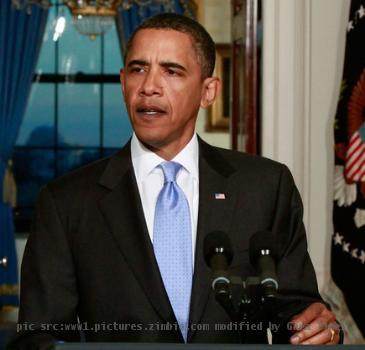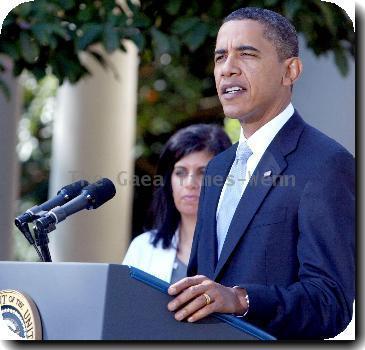As Huffington Post turns 5, goal of being Internet newspaper takes shape
By Jake Coyle, APMonday, April 26, 2010
HuffPo ascends toward top news sites as it turns 5
NEW YORK — The Huffington Post will soon turn five-years-old — veritable old-age in Internet years.
As the site, co-founded by Arianna Huffington and launched on May 9, 2005, marks the anniversary, its proclaimed mission to be an “Internet newspaper” gains more credence every time its traffic surpasses the websites of its print brethren.
It recently made the top 10 current events and global news sites, with 13 million unique users in March, an increase of more than 94 percent over the year before, according to Nielsen Online. If the trend continues, The Huffington Post could soon pass The New York Times’ website (16.6 million uniques in March) in traffic this year.
The growth is a remarkable feat for a site launched as little more than a collection of celebrity bloggers, a liberal rival to the Drudge Report.
Since then, HuffPo, as it is known, has developed 20 sections ranging from food to books, launched four city-specific pages and integrated itself with social networks, partnering with Facebook and Twitter.
Ken Lerer, chairman and co-founder, says he recently looked up the Huffington Post from 2005 on Archive.org.
“I was floored,” he says. “It seemed really boring, very clean. It was great, but there wasn’t a lot there compared to where we are now.”
Now, the breadth of the Huffington Post — combining work from a paid staff of 70 reporters and editors, some 6,000 bloggers writing for free, and content from The Associated Press (they’re a paying member) and other media companies — is considerably greater.
It’s a low cost, high content formula that has proven exceptionally efficient at attracting readers, though it hasn’t yet achieved profitability through advertising, which Lerer says is robust this year. (Greg Coleman, formerly an ad executive at AOL and Yahoo, was recently hired as chief revenue officer to increase advertising revenue.)
“I’m completely sure the site will be profitable by the end of the year,” Huffington says. “It would have been profitable a lot sooner if we hadn’t kept growing.”
Maturing from primarily a political news site to a general interest destination is an interesting proposition in an online world where success has often meant focusing on niche markets. In some ways, HuffPo is beginning to resemble an old-fashioned newspaper.
“Huffington Post is still saying, ‘What people still like is everything — or a lot — in one place,’” says Ken Doctor, author of “Newsonomics: Twelve New Trends That Will Shape the News You Get.”
“It’s the same principle (of a newspaper). It’s just some different content and it’s organized different. The irony is just too rich.”
Becoming all things to all people, though, could be difficult for a site typically seen as left-leaning. Huffington, who is also editor-in-chief, disputes that image, citing the site’s reporting on the war in Afghanistan and on the public option in the health care debates.
“We don’t have any ideological alignment with either political party,” she says. “We have been very critical of both political parties at different times. Our alignment is with what we consider to be in the interests of the public.”
To recognize the importance of investigative journalism, the Huffington Post Investigative Fund was started. Its articles are available for anyone to post freely. And the site earned a question at President Barack Obama’s first press conference in 2009, although the prearranging of that question brought some criticism, too.
Nevertheless, while HuffPo has made advances in original reporting, it still relies largely on commentary and aggregation for attention.
“We’ll always curate news in addition to having our own original content because that’s the way the Internet works,” Lerer says. “That’s the model. If you don’t link and if you don’t get linked to, then I think it’s an impossible model.”
Though some sites are adopting or considering pay walls (the Times says it will begin metering traffic next year), the Huffington Post has thoroughly embraced Web culture.
Says Huffington: “Those who still can’t believe, ‘Why are people updating their Facebook profiles for free? Why are they editing Wikipedia entries for free? Why are they blogging on the Huffington Post for free?’ — the truth is that many people want to do that as part of their own self-expression. Nobody asks why are people watching bad TV for seven hours a day.”
The site has launched a social news feature with Facebook Connect, which gives users the option to link their commenting to their Facebook profile, thus roping in their friends and family to the discussion. More recently, HuffPo debuted Twitter feeds for each of its sections; it will soon launch one for it home page.
One exception to Web openness: The site moderates commenting to keep the discourse civil. This has helped, Huffington says, to create a sense of community. CEO Eric Hippeau says that there were 2.3 million comments posted in March, “which is a lot of different opinions,” he notes.
“They understand the multiplier effect on the Web — how you can generate and multiply traffic by using the vitality of the Web,” says the author Doctor. “Clearly, they got more than they ever bargained for when Arianna Huffington got together with some other people and put the site together. That brand rode the Obama wave and now I think it’s really running the post-Obama wave in terms of a congenial site for people of the left or progressive political affiliation.”
Lerer says that the “majority” of the $25 million that the site received in investment capital from Oak Investment Partners in late 2008 is still left over.
He promises that HuffPo will make a much “deeper dive” into social networks, develop more city-centric sites and a produce a lot more video.
At the five-year-old Huffington Post, optimism abounds to one day pass the Times and Tribune Newspapers (the only newspapers in the top 10) and even the other top sites in traffic: Yahoo! News (40.2 million uniques in March, according to Nielsen Online); CNN Digital Network (38.7 million); and the MSNBC Digital Network (33.8 million).
“We’ve got cash, we’ve got traffic — things are pretty good right now,” Lerer says. “It’s nice to have a pure Internet model.”

